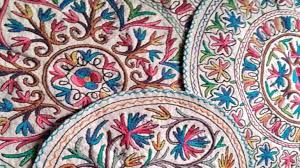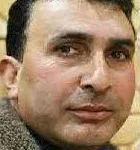Srinagar, Aug 01: In an effort to revive Kashmir’s ailing traditional crafts, the Jammu and Kashmir government has approved funds for the repair and setup of a high-capacity carding machine exclusive to the centuries-old Namdha craft. The move is perceived as part of the larger thrust under the Capital Expenditure (CAPEX) plan to revitalize the Valley’s rich handicrafts and handloom industry.Namdha, a classic Kashmiri art of felting wool and embellishing it with colorful embroidery, was a rich industry in the past, particularly in the Anantnag and Srinagar districts. Used in carpets, prayer mats and ornaments, Namdha was a major export to the Middle East and Central Asia. But it has declined sharply in recent years with dwindling numbers of artisans, antiquated equipment, and restricted marketability thrusting the trade to the fringes.The carding machine with high capacity, to be set up in the government-owned Handicrafts and Handloom department in Kashmir, is bound to enhance the processing of raw wool, a major bottleneck that has long held up Namdha production. Most of the wool that goes into making Namdha today is still carded by hand, a time-consuming process that does more than just delay production but also contributes to the cost of production.”Infrastructure modernisation is the key if we are to preserve this craft,” stated Mirza Shahid Ali, Deputy Director, Handicrafts and Handloom. “The new carding building will cut the workload, improve production, and enable artisans to concentrate on the artistic side of the craft,” he added.The programme is not about machines alone, according to officials it’s about an overall strategy to keep traditional knowledge alive and thriving while adapting it to existing market demand. Under the plan, artisans will also undergo skills training in using the new machines so they can produce more effectively and enhance overall production standards.We want to render Namdha economically feasible again,” Ali explained. “With better infrastructure, we can serve increasing demand from domestic and foreign buyers. More importantly, we hope to bring young artisans back to the craft.” The addition of modern machinery, officials add, could be a boon for the craft, now working a few hundred artisans, predominantly older generations who learned their skills from their ancestors.Namdha has already been selected as a flagship craft in the government’s “revival of languishing arts” programme an initiative that also features papier-mâché, Sozni embroidery, Kani weave and other traditional forms of art on the verge of extinction due to mechanisation and competition from the world.Artisans and professionals have greeted the decision but warn that infrastructure would not be enough. “We require sustained marketing facilitation, direct buyer-artisan linkages, and platforms which highlights our cultural heritage,” said Bashir Ahmad, an Anantnag-based Namdha artisan. “Short of that, machines alone won’t deliver the revival we are seeking.”However, for others in Kashmir’s artisan world, the latest move by the government is a ray of hope. If done right, it could be a turning point one that resuscitates an age-old art form, but also restores dignity and earnings to those for whom their very existence depends on it.The next few months will be decisive, with government officials working to activate the carding factory and bring the benefits down to the grassroots. In the meantime, Kashmir’s Namdha craft might be receiving the second chance it has long desired








